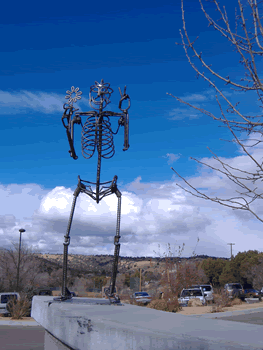BEFORE CLASS: BACKGROUND AND PREPARATION
- Preview text chapters, lab manual, Powerpoint
presentations, web resources
- Print out handouts for this section of course
- View digitized human limb movements--walking,
jumping, stairs, elbow is great (needs video player installed) [link]
- View computer simulation of human gait movements
showing research lab approach to gait problems [link]
|
| GOALS |
PRESENTATIONS |
ACTIVITIES |
|
MUSCLE MECHANICS
-
Appreciate how muscles generate
force, and how the size and orientation of the muscle determines its
force and movement properties
|
Mechanics of Movement
I: Muscle force
|
Bucket demo: Muscle force versus length
experiment.
Simulation of whole muscle properties
|
|
JOINTS
-
Learn different joint types and
practice joint movements
|
Mechanics of Movement
II: Joints
|
Human knee joints and plastic models of knee
joint.
|
| WEB RESOURCES Great review of muscle structure and
function from Eastern Tennessee State [link]
Knee surgery site [link]
|
DETAILED LEARNING OBJECTIVES
- Examine how muscles with a larger cross-sectional
area develop more tensional force or pulling force
- Examine how muscle length and actin-myosin
overlap are related to joint angle, and how they affect muscle force
generation.
- Be able to understand and use the terms concentric,
isometric and eccentric as they relate to muscle agonists and their
antagonists.
- Assemble a good understanding of the
different classes of joints, the tissue types involved and where they
would be found in the body.
- Be able to describe all of the principal components
of a typical synovial joint and demonstrate their role in joint movement.
- Organize the types of synovial joints on the the
basis of the shape of the joint surfaces.
- Analyze each joint of the upper and lower limb, as
well as the axial skeleton and know its principal anatomical components,
what type of joint it is and what kind of movement it allows for.
|



